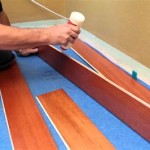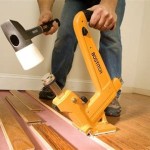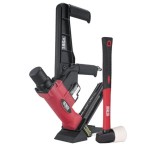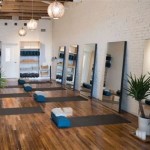Which Is The Best Flooring For Bedrooms and Bathrooms?
Selecting the appropriate flooring for bedrooms and bathrooms requires careful consideration of several factors, balancing aesthetics with functionality, durability, and cost. These rooms present distinct challenges. Bedrooms prioritize comfort and tranquility, while bathrooms demand moisture resistance and ease of cleaning. The ideal choice depends on individual needs, lifestyle, and budget.
This article explores a range of flooring options suitable for bedrooms and bathrooms, assessing their respective advantages and disadvantages to provide a comprehensive guide for making informed decisions. Considerations will include material properties, installation requirements, maintenance demands, and overall cost-effectiveness.
Durability and Water Resistance: Key Considerations for Bathrooms
Bathrooms, due to their inherent exposure to moisture, require flooring materials exhibiting exceptional water resistance. Standing water, humidity, and spills are common occurrences, making durability against water damage paramount. Materials that are porous or prone to warping when exposed to moisture are generally unsuitable for bathroom applications.
Ceramic and porcelain tile are widely recognized as excellent choices due to their inherent water resistance. These materials are fired at high temperatures, resulting in a dense, impermeable surface. Grout lines, however, are susceptible to moisture penetration if not properly sealed. Regular sealing of grout lines is crucial for maintaining the integrity of tile flooring in bathrooms.
Vinyl flooring, particularly sheet vinyl and luxury vinyl plank (LVP), offers another durable and water-resistant option. Sheet vinyl provides a seamless surface, eliminating grout lines and minimizing the risk of water damage. LVP, while composed of individual planks, features tight-fitting joints and a waterproof core, effectively preventing water penetration. High-quality LVP products are designed to withstand prolonged exposure to moisture without warping or degrading.
Natural stone, such as granite and marble, can be used in bathrooms, but requires more diligent maintenance. These materials, while beautiful and durable, are porous and susceptible to staining if not properly sealed and maintained. Regular sealing is essential to protect the stone from water damage and discoloration. Moreover, some stone types can be slippery when wet, necessitating the application of slip-resistant coatings.
Wood flooring, particularly hardwood, is generally not recommended for bathrooms due to its susceptibility to water damage. Engineered wood, consisting of a hardwood veneer over a plywood core, offers slightly improved water resistance compared to solid hardwood. However, prolonged exposure to moisture can still cause warping and delamination. If wood flooring is desired in a bathroom, meticulous sealing and prompt cleanup of spills are crucial.
Comfort and Aesthetics: Prioritizing Bedroom Flooring Choices
Bedrooms emphasize comfort and aesthetics, making softness, warmth, and visual appeal key considerations when choosing flooring. While durability is still important, the focus shifts from water resistance to creating a relaxing and inviting atmosphere. The flooring should contribute to the overall tranquility of the space.
Carpet remains a popular choice for bedrooms due to its inherent softness and warmth. It provides a comfortable surface underfoot and absorbs sound, contributing to a quieter and more peaceful environment. Various carpet types are available, including plush, berber, and frieze, each offering different levels of softness and durability. Stain resistance is an important consideration for bedroom carpets, especially in homes with children or pets.
Hardwood flooring offers a classic and elegant look for bedrooms. It is durable, easy to clean, and adds value to the home. While not as soft as carpet, it can be softened with the addition of area rugs. Hardwood is also a good option for individuals with allergies, as it does not trap dust and allergens as readily as carpet.
Laminate flooring presents a cost-effective alternative to hardwood. It mimics the appearance of hardwood at a lower price point and is relatively easy to install. While not as durable as hardwood, laminate is scratch-resistant and easy to clean. It also offers a wide range of styles and colors to complement various bedroom decors. Sound absorption may be a concern with some laminate flooring options, potentially requiring the use of underlayment for noise reduction.
Cork flooring is an eco-friendly and comfortable option for bedrooms. It is naturally soft and warm, providing a cushioned surface underfoot. Cork is also sound-absorbent and hypoallergenic. However, it is more susceptible to scratching and denting than hardwood or laminate, requiring careful maintenance. Sealing is required to protect from moisture and stains.
Cost and Installation: Balancing Budget and Effort
The cost of flooring varies significantly depending on the material, quality, and installation requirements. Installation costs can also vary widely, depending on the complexity of the project and whether professional installation is required. Balancing budget constraints with desired features is essential in making a practical flooring decision.
Vinyl flooring, particularly sheet vinyl and basic LVP, tends to be among the most affordable options. Installation can often be done as a DIY project, further reducing costs. However, higher-quality LVP products and professional installation will increase the overall expense.
Laminate flooring is generally more affordable than hardwood but more expensive than basic vinyl. Installation is relatively straightforward, making it a viable option for DIY enthusiasts. However, improper installation can lead to problems such as buckling and gapping.
Carpet prices vary widely depending on the fiber type, pile height, and construction. Installation typically requires professional assistance, adding to the overall cost. The underlayment also contributes to the total expense, impacting both comfort and durability.
Ceramic and porcelain tile are moderately priced materials. However, installation can be labor-intensive and often requires professional expertise, especially for complex patterns or intricate designs. The cost of grout, mortar, and sealing materials should also be factored into the overall budget.
Hardwood and natural stone are typically the most expensive flooring options. Installation requires skilled craftsmanship and specialized tools, resulting in higher labor costs. The cost of finishing, sealing, and ongoing maintenance should also be considered.
Beyond material and installation costs, long-term maintenance expenses should also be considered. Some flooring types require regular sealing, cleaning with specialized products, or professional refinishing, adding to the overall lifetime cost of the flooring.
Ultimately, selecting the best flooring for bedrooms and bathrooms involves a multifaceted evaluation of durability, water resistance (especially for bathrooms), comfort, aesthetics, cost, and installation requirements. Carefully weighing these factors and aligning them with individual needs and preferences will ensure a satisfactory and long-lasting flooring solution.

Waterproof Bathroom Flooring Options Twenty Oak
:max_bytes(150000):strip_icc()/interiors-of-a-bedroom-126171674-57be063d3df78cc16e3cc6cf.jpg?strip=all)
11 Popular Bedroom Flooring Options To Consider

The Pros Cons Of Bathroom Flooring Options Carpet Court

Best Bathroom Flooring Options Forbes Home

What Is The Best Flooring For A Bathroom
:max_bytes(150000):strip_icc()/top-bathroom-flooring-options-1821353-08-10a210908a09459cb96b9313f1d7fde0.jpg?strip=all)
Best Flooring For Bathrooms Your Next Upgrade

What Is The Best Flooring For Bathrooms Tarkett

How To Choose The Bedroom Floor Twenty Oak
What Is The Best Flooring For Bedrooms Tarkett

Best Flooring Options For Bathrooms Word Of Mouth Floors
Related Posts








